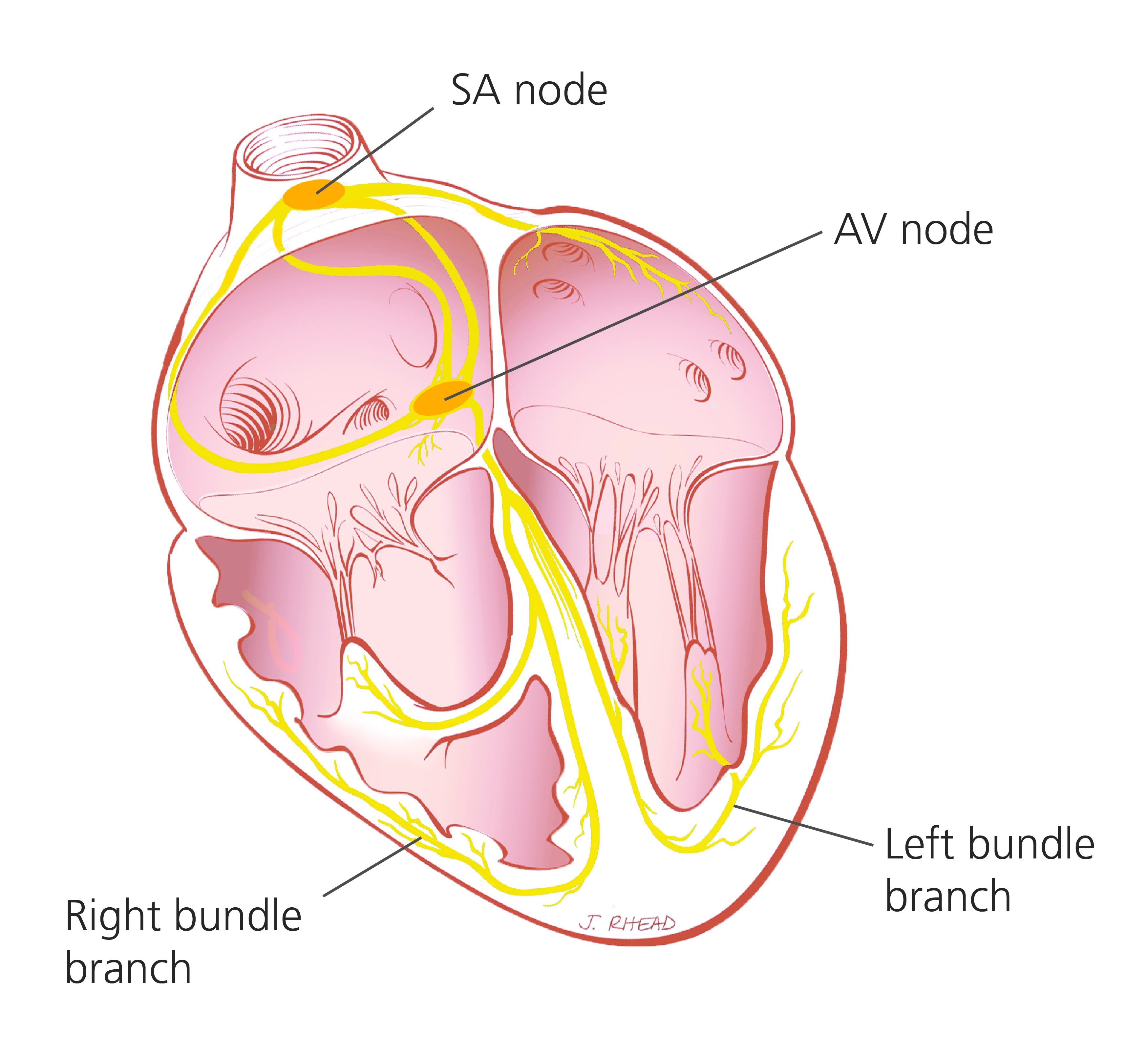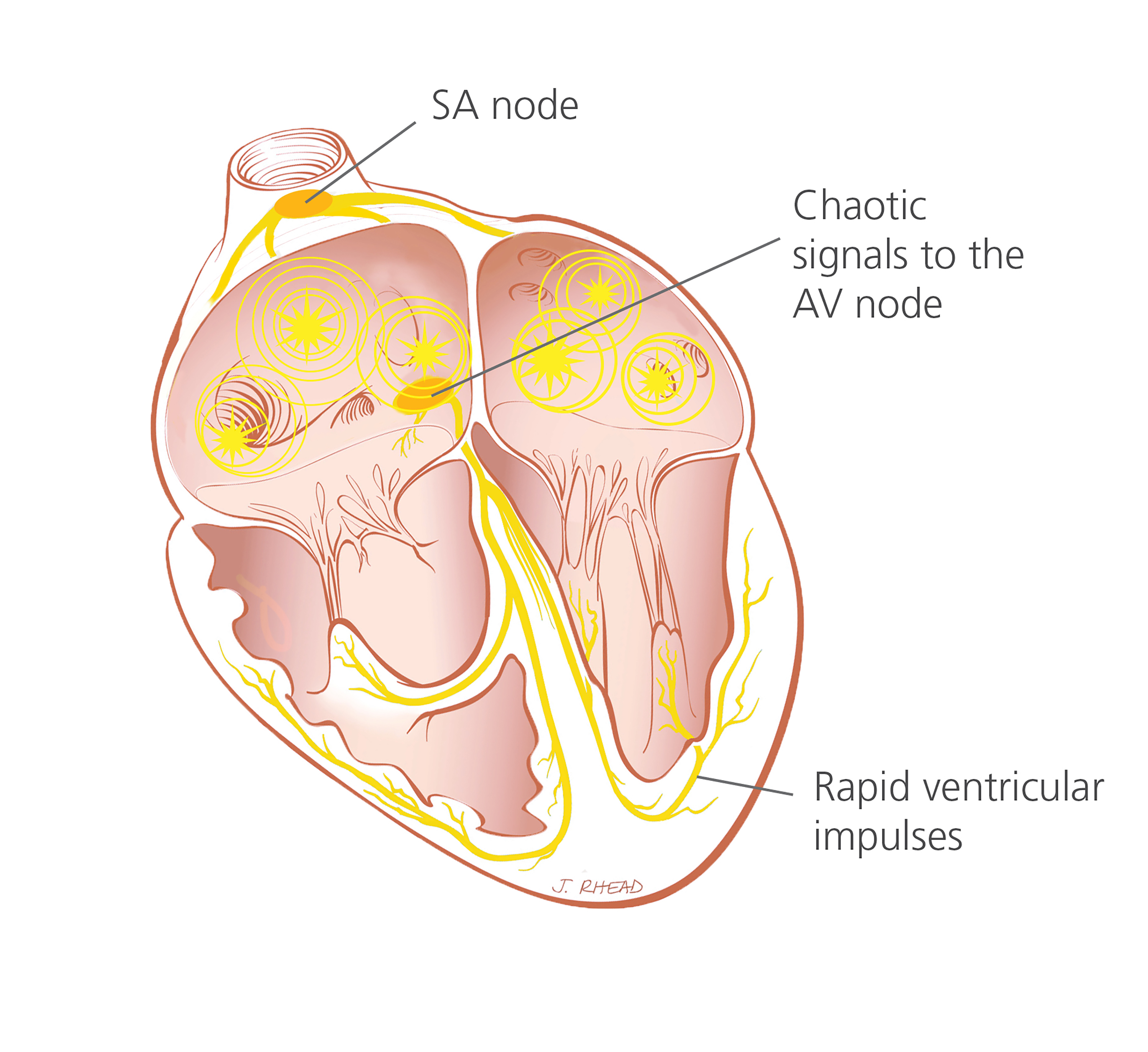In a healthy heart, an electrical pulse travels through once every 60 to 100 times per minute while you're at rest. With atrial fibrillation, the electrical pulses come too fast. The pulses in the upper chambers then compete for a chance to travel to the lower chambers of the heart. The result is a rapid, irregular heartbeat.
In a healthy heart, electrical impulses move smoothly through the heart. The heart beats evenly and regularly.

With atrial fibrillation, the electrical impulses come too fast. Some of them circulate in the atria rather than passing through the heart. Afib can come and go — returning to normal after a few minutes or hours — or it can persist.

Symptoms
Some patients with Afib do not have any symptoms. For others, Afib can cause symptoms such as:
- A racing or irregular heartbeat, also called palpitations
- Chest discomfort
- Shortness of breath
- Tiredness or weakness
- Feeling dizzy, lightheaded, or confused
Causes
Many conditions can increase your risk, or make it more likely, that you will get Afib:
- High blood pressure
- Age (Afib is more common in people over 60 years old)
- Obesity
- Heart failure
- Thyroid disease
- Lung disease
- Coronary artery disease
- Heart attack
- Family history of Afib
In some cases of Afib, the cause can't be identified.
Risk of Stroke
Your chances of having a stroke increase three to five times if
you have Afib. Proper treatment greatly reduces this risk.
Unfortunately, strokes that occur from Afib are often
serious and can result in disability and increased risk of
death. Here’s what can happen:
- Because the atria are not pumping
normally, blood can be left behind to pool.
- The blood that pools in the atria can form
blood clots.
- A blood clot in the heart can
move into the arteries that feed your body. If a clot
enters an artery that leads to your brain and blocks
the blood flow, it causes a stroke.
© 2018 Intermountain Healthcare. All rights reserved. The content presented here is for your information only. It is not a substitute for professional medical advice, and it should not be used to diagnose or treat a health problem or disease. Please consult your healthcare provider if you have any questions or concerns.